The Olympic Lifts
And why there is more to power development for Footy
Power is expressed in many forms in football – vertical leap and explosive acceleration the 2 that instantly jump into most peoples minds (although footy requires many more varied expressions of power than just these 2). And for many years now athletes of different types have jumped on the Olympic lifts as a way of developing explosive power. Specifically the clean – or even more common in sports training, the power clean – is becoming more and more common in the programs of professional and semi professional athletes of different types. As with many things at the elite level, these techniques are filtering down to grassroots level and are becoming more and more common place in your average gym. But are they really all that beneficial to footy, and specifically to a non-full time player?
There is no doubt that a correctly implemented program of Olympic lifts are an effective tool for developing explosive power. In fact the old Soviet Olympic weightlifters, when tested against their 100m sprinters, would be neck and neck with the sprinters in a sprint for the first 20-30m, before the sprinters inevitably burnt them off – but the key point is the explosive starts thee much larger weightlifters can generate in a sprint, due to their Olympic lifts. However, there are some glaring limitations (when it comes to carryover and effectiveness for footy) that must be taken into account.
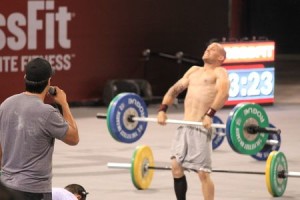
The growing popularity of crossfit is another movement that has lead to the growing number of people performing Olympic lifts (usually with both poor form and no consideration for correct programming or periodisation)
Steep learning curve – Which is time consuming
The lifts are very technical in nature, and take a considerable time to learn properly. 95% of cleans you see being performed in the gym around you are being done incorrectly, with far too much pulling and curling with the arms, and no where near enough emphasis on the hips (which is really what to are supposed to be training – the hips – to jump and extend explosively.) In short, what can be a very effective exercise for developing explosive hip drive, is actually completely useless when performed incorrectly. Then when you throw in the risk of injury from being incorrectly performed, suddenly it’s a little less attractive.
The fact that they take a while to master, also means that a lot of time needs to be dedicated to learning them, and often the only way to speed up this process is for the lift to become the central part in your program – which of course it isn’t, because you are training to be a footy player not an Olympic lifter.
Furthermore, the very nature of Olympic lifts tends to suit certain body types and dimensions (such as short limbs and certain proportion and levers too), and there are many professional athletes, let alone grassroots athletes that don’t fit this type, and therefore aren’t suited to doing the Olympic lifts as a training tool.
Limitations in Effectiveness
The difficulties with learning and correct form aside, there are limitations in the carryover to sports like footy itself. We will briefly cover 2 main examples here. Football is a sport where nearly every movement is performed off 1 foot at a time; sprinting, changing directions and jumping are all movements requiring power, that are performed off 1 leg at a time. And in terms of the research out there, it is still doubted that bi-lateral speed strength (off 2 legs in other words) developed from something like Olympic lifting, will transfer to single leg speed strength (like a single leg jump like in a ruck contest.) So power developed from power cleans (when performed properly) will have a carryover to a double leg stationary jump, but its carryover to all the other movements in footy are debatable.
Another example of this lack of carryover is in changing directions when running – another very important expression of power in a game of footy. However there has also been very little carryover found between power clean scores and change of direction performance (in terms of improvement in one leading to improvement in the other.) This is believed to tie in with the fact that change of directions is associated with being a unilateral (1 leg) expression of power, rather than a bilateral (2 legs) expression of power like a power clean. Additionally, Olympic lifts are associated predominantly with vertical force production, whereas this change of directions is associated with horizontal force production (to propel yourself forwards or sideways, rather than upwards like a jump.)
These are only a couple points, and I have endeavoured to keep them fairly short and keep the technical language to a minimum, but hopefully you are understanding the point we are making about the value of olyimpic lifting when training to develop power for footy. As world renowned strength and conditioning coach Mike Boyle says – ‘your objective is to develop better athletes, not to develop Olympic lifters.’
My Verdict
If you are already proficient in the power clean or snatch and know how to do them absolutely correctly, great. Put them in your program, however ensure they are programmed and periodised correctly and only incorporated at the appropriate times for footy power development.
If not, replace them with kettlebell swings which are a great tool for developing explosive hip power in a fairly similar fashion, and with a less steep learning curve. Furthermore, footy specific plyometric exercises are where you will experience the most development of footy specific power expression – and have far more carryover to football than the Olympic lifts do anyway. Again, ensure they are programmed and periodised appropriately.
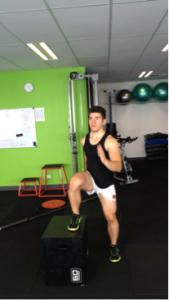
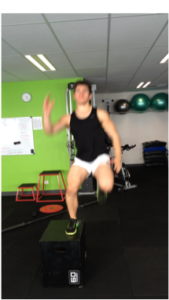
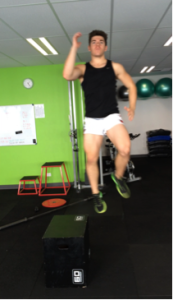

If you still insist on doing the Olympic lifts, learn and get coached in them by a proper accredited coach with a Power sports Coach license from the Australian Weightlifting Federation, not a ‘Crossfit qualified coach’ or a friend who did crossfit or watched a few videos on youtube. Learn them correctly, or else you are wasting you time with no benefit and more risk of injury. And once you have learned them correctly, as always, ensure they are programmed in correctly, and they fit into the program well, and don’t interfere with the central end goal – footy.
Strength Coach
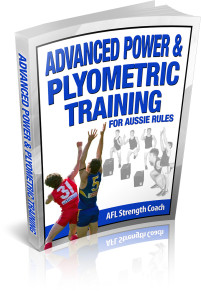
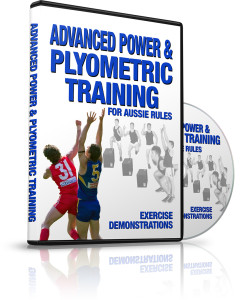
If you are interested in more information on power development specifically for footy, and you are having a hard time finding the footy plyometrics resource location on the site, the Power and Plyometric Training for Footy resource can be found as an add on to Functional Strength Training for Australian Rules Football

